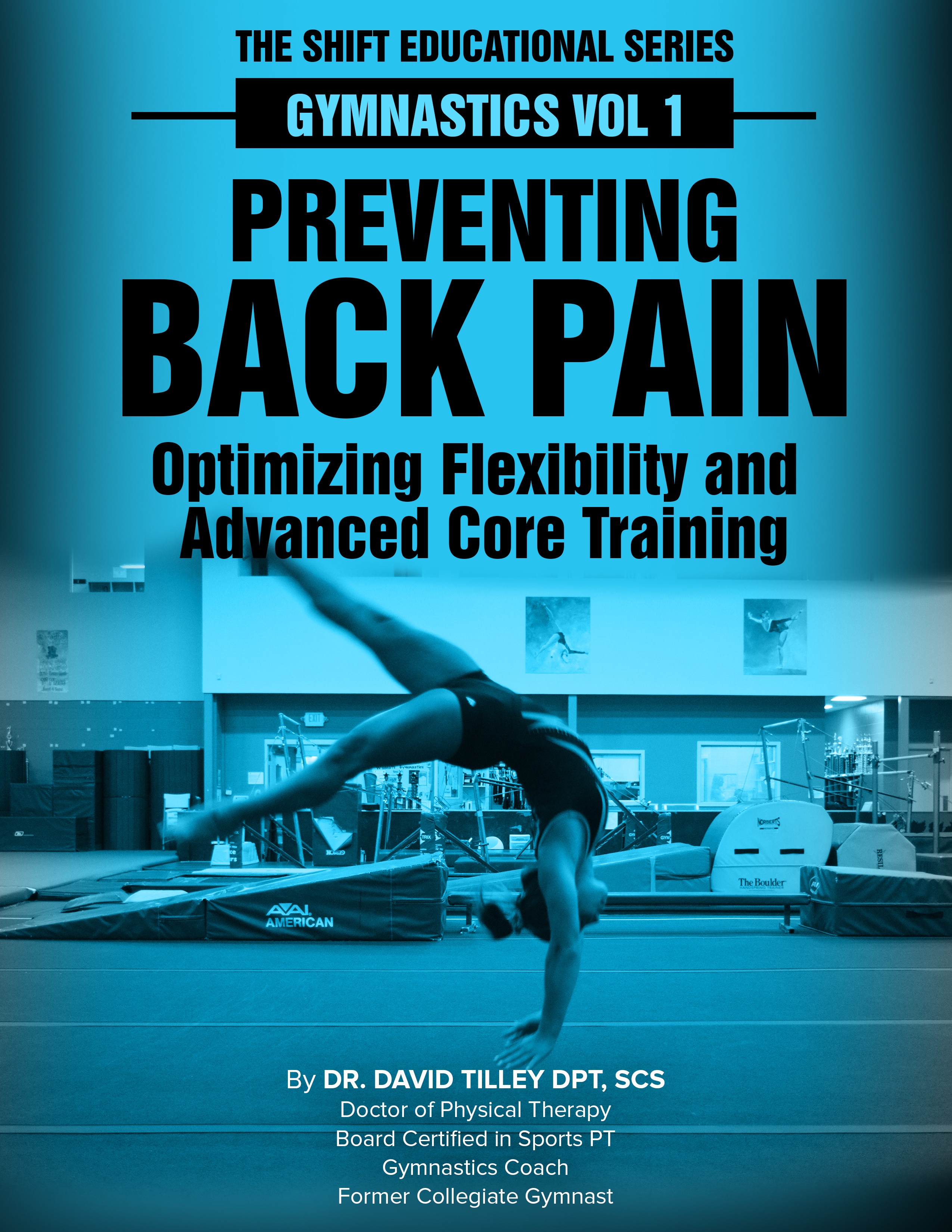Every gymnast, gymnastics coach, strength coach, and medical provider knows that appropriate core development is essential for success and reduced injury in gymnastics. There are hundreds of gymnastics specific core strength exercises to pick from (presses/stalders, L holds, leg lifts, planks, arch/hollow rocks, etc), many of which need to be done on a regular basis. However, as I have progressed and learn more in the last 5 years I have found huge success in implementing many “non gymnastics” based core drills also. They have also become a staple in my advanced rehab and return to sport phases when working with patients. Here are 5 of my favorites that I feel the gymnastics community should learn more about, and properly implement with their athletes.
1. Basic Core Bracing and Breathing
Even though basic core control drills aren’t as glamorous as L hold rope climbs, it is absolutely essential that gymnasts master these basics and work them daily. A gymnast must know how to engage their core while maintaining proper breathing patterns (more diaphragm and less upper chest breathing) in a relatively neutral alignment. Many gymnasts default to over hollowed, over extended, or faulty core control/breathing strategies when attempting skills. Without revisiting and stressing these core basics, it makes it very challenging to properly work any higher level gymnastics specific core strength exercise. I highly recommend readers first teach their athletes, and then add them in daily. They are an essential part of our warm up that only takes 2 minutes.
2. Plank Kettlebell / Dumbell Drag Throughs
I got last year this from some of my strength coach friends, and immediately started programming it once a week in our strength. The main reason that I love this exercise is because it takes a traditional (pretty boring) front plank and adds both a rotational and weight shifting component. I think it has great application to bar and floor twisting, as well as helping to build in an upper body pulling component for scapular strength.
3. Medball Slam and Throw Variations
I wrote about med ball slam variations a few months ago in this article, but still continue to see huge benefit to them. Standing medball slams are great for dynamic core control and tumbling/shape change application, and overhead medball throws are great for teaching a hip open setting technique. I will say I have been using much more 1/2 kneeling medball diagonal throws than diagonal slams, in an effort to help it transfer to an “up and over” type floor and vault twisting technique I learned from many great national team coaches. The key for these are building on the basics above, and using lighter weight with high power/intent to encourage rapid rate of force development.
4. Loaded Carry Variations
Loaded carries have become very popular in the strength and conditioning world through the last 5-10 years. After learning from friends of mine and understanding how to coach them, I think loaded carries have a ton of benefits for gymnastics. It can bias certain aspects of the core, teach proper breathing mechanics and control under loaded tension, and are a fantastic way to develop metabolic capacity when programmed during the right energy systems workout. There are many variations but farmer, suitcase, front rack, and overhead carries tend to be my 4 go to for our team. Overhead carries in particular develop great single arm loading that is essential for pirouetting and tumbling skills.
5. Sled Push/Pull Variations
Similar to above, sled pushing and pulling variations go hand in hand with loaded carries. They are great to integrate leg strength or power development with core strength. Pushes can help bias anti extension core strength, pulls can help bias anti flexion core strength, and lateral sled drags can go a long way for anti – side bending and glute medius/minimus development. As with other exercises, there are a ton of great ways to make these harder or easier depending on the athlete you are working with.
Want To Learn More About Developing Core Strength and Power?
If you liked this post and want to learn a ton more about gymnastics core development, increasing shoulder/hip flexibility, preventing lower back pain, and training with cutting edge scientific methods, be sure to check out my brand new e-book, “The SHIFT Gymnastics Educational Series: Vol 1” that was just released. For this week only it is at a special discount of 25% off, so don’t miss out! You can click the link above to learn more, or the “Get Instant Access Now” to instantly get your hands on a copy.
The book has 230 pages, 7 Chapters, and 300+ full color photos that outlines all of the work I have done in gymnastics up to this point. Inside I go over hundreds of more exercises and training concepts for the gymnastics community to utilize, along with lots of current medical/strength research that fuels my ideas.
That’s all for now, and I hope this post was helpful!
– Dave Tilley DPT, SCS
Interested in live cases where I apply this approach and integrate it with pain science, manual therapy, repeated motions, IASTM, with emphasis on patient education? Check out Modern Manual Therapy!
Keeping it Eclectic...















Post a Comment
Post a Comment